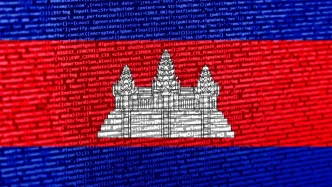In the lush landscapes of Đắk Lắk Province, nestled in Vietnam’s Central Highlands, a quiet revolution in tourism is taking root. The region, long known for its cultural heritage and natural beauty, is pioneering an “elephant-friendly” tourism model that prioritizes the welfare of domesticated elephants over traditional practices like elephant riding. This shift, driven by local organizations, businesses, and international partnerships, offers visitors a chance to engage with these majestic animals in a humane way while addressing pressing conservation challenges.
A New Way to Experience Elephants
At the heart of this initiative is Yok Đôn National Park, which, in collaboration with Animals Asia since July 2018, has transformed how tourists interact with elephants. Gone are the days of riding on their backs; instead, visitors now observe the animals in their natural routines—eating, bathing, and roaming through the forest. The experience also includes exploring the park’s rich biodiversity, creating a deeper connection to the environment. Tourists from across Vietnam have shared their delight in these interactions, often donning local costumes to feed the elephants and capture memorable photographs.
Similarly, the Buôn Đôn Suspension Bridge Tourism Centre, a key attraction in the region, made a significant pivot two years ago by halting elephant riding services. In its place, the centre introduced activities such as feeding, bathing, and participating in health blessing ceremonies for the elephants. These interactions are designed to respect the animals’ dignity while showcasing their cultural significance in the Central Highlands, where elephants have long symbolized strength and harmony with nature.
Trần Thị Kim Anh, Director of the Biệt Điện Tourism and Hotel Branch, which manages the Buôn Đôn centre, highlighted the positive outcomes of this model. “After two years, we’ve seen encouraging results, not just for the elephants’ living conditions but also for the local communities who depend on tourism,” she said. The centre has also focused on improving the elephants’ environment with better diets, medical care, and accommodations, setting a benchmark for responsible tourism.
Conservation at the Core
The elephant-friendly model is more than a tourist attraction; it’s a critical step toward conservation in a region where domesticated elephants face existential threats. According to the Đắk Lắk Centre for Elephant Conservation, Animal Rescue and Forest Protection Management, the province is home to just 35 domesticated elephants, primarily in Lắk and Buôn Đôn districts. Most of these animals are over 40 years old, and unsuccessful breeding efforts, combined with shrinking grazing areas, have placed the population at high risk of extinction.
Compounding the issue is the lack of official regulations banning elephant riding across the province. While Buôn Đôn has embraced the new model, Lắk District still offers riding services, drawing tourists who seek such experiences and putting additional strain on elephant welfare. This disparity underscores the need for unified policies to protect these animals from exploitation.
The initiative aligns with a broader commitment made in 2021 through a memorandum of understanding between the Đắk Lắk Provincial People’s Committee and Animals Asia. The agreement aims to end elephant riding in tourism and festivals, promoting a sustainable alternative that minimizes harm to the animals. Ryan Hockley, Elephant Welfare Advisor at Animals Asia, emphasized the benefits of this approach. “With this model, elephants live closer to their natural instincts, leading to better health and longer lifespans,” he noted.
Challenges and Community Impact
Despite its successes, the transition to elephant-friendly tourism faces significant hurdles. One major challenge is ensuring alternative livelihoods for elephant owners and handlers, many of whom have relied on riding services for income. Vice Chairman of the People’s Committee of Buôn Đôn District, Y Si That Ksor, stressed the importance of integrating programs and non-governmental projects to support these communities. Infrastructure development, technical training, and vocational skills are seen as essential to diversifying tourism offerings and reducing dependence on outdated practices.
At a recent workshop titled “Elephant Stories” in Buôn Ma Thuột City, hosted by Simexco Daklak Co. Ltd, stakeholders including local authorities, businesses, and elephant handlers brainstormed solutions to these challenges. Among the proposals were strategies to better understand tourist preferences, enhance tour quality, and promote the model through various platforms to attract a wider audience.
Director of the Đắk Lắk Department of Culture, Sports and Tourism, Nguyễn Thuỳ Phương Hiếu, affirmed the province’s long-term vision. “This model is our direction for conserving rare and endangered wildlife. We’ve instructed localities and businesses to phase out elephant riding completely after 2026,” she stated. To enrich the visitor experience, the model has been paired with cultural activities such as exploring Lao traditions, tasting local cuisine, hiking, camping, and enjoying gong performances along the legendary Serepok River.
A Model for Sustainable Tourism
The elephant-friendly tourism initiative in Đắk Lắk is a promising example of how conservation and commerce can coexist. By linking animal welfare with cultural and environmental experiences, the province is crafting a sustainable tourism product that appeals to ethically minded travelers. However, its success hinges on addressing the remaining challenges, from regulatory gaps to community support.
As Đắk Lắk moves toward a future free of elephant riding, the region’s efforts could inspire similar transformations across Vietnam and beyond. For now, visitors to the Central Highlands are witnessing a rare shift—one where respect for nature and heritage takes precedence, offering hope for the survival of these iconic creatures.














